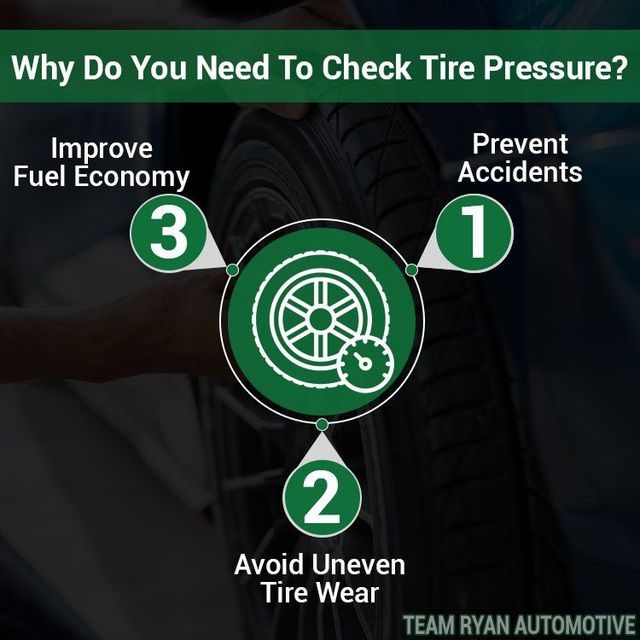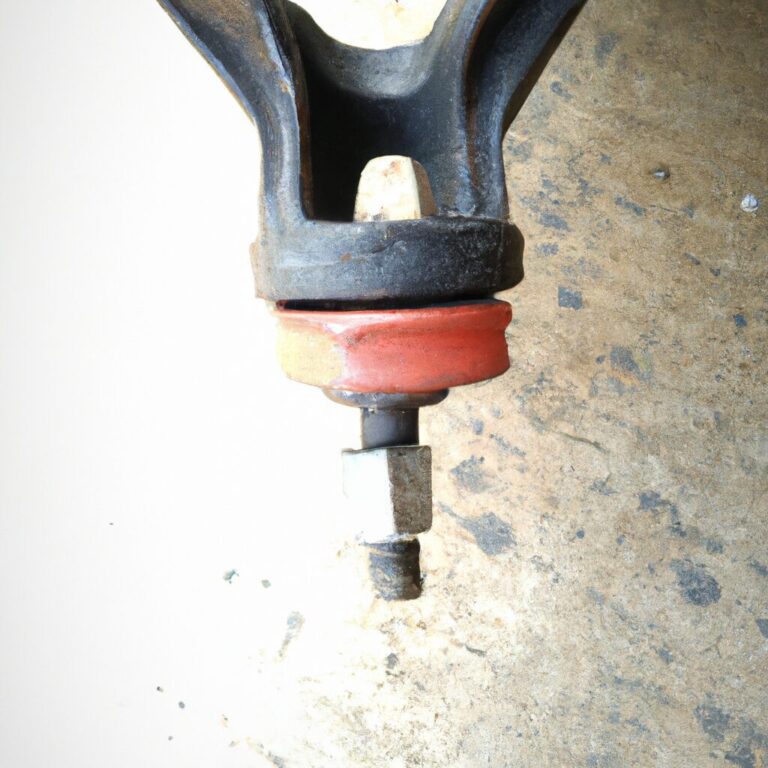How to Check Tire Pressure Without a Gauge
To check tire pressure without a gauge, press down on the tire with your foot. Compare the firmness with your other tires.
Proper tire pressure ensures safety, optimal vehicle performance, and better fuel efficiency. By regularly checking tire pressure, you can prevent accidents and unnecessary wear and tear on your vehicle. This simple task can save you money in the long run and keep you safe on the road.
Let’s explore some easy ways to check tire pressure without a gauge and the importance of maintaining proper inflation levels for your tires.

Credit: rnrtires.com
Why Tire Pressure Matters
Understanding the importance of maintaining proper tire pressure is crucial for vehicle safety, fuel efficiency, and tire wear. As such, it’s essential to check tire pressure regularly and ensure it falls within the recommended range. If you don’t have a tire pressure gauge on hand, there are alternative methods to check tire pressure without a gauge. First, let’s delve into why tire pressure matters and how it affects your driving experience.
Safety
Proper tire pressure is crucial for ensuring optimal traction, especially during emergency maneuvers and sudden stops. Insufficient tire pressure can lead to increased stopping distance and reduced responsiveness, which can compromise overall vehicle control.
Fuel Efficiency
Maintaining optimal tire pressure can significantly affect fuel efficiency. Under-inflated tires create additional rolling resistance, leading to increased fuel consumption. Conversely, over-inflated tires can cause uneven tread wear and reduce fuel economy.
Tire Wear
Incorrect tire pressure can result in uneven wear, leading to the need for premature tire replacement. Under-inflated tires in particular can cause excessive heat buildup, accelerating tire degradation and reducing the overall lifespan of the tires.

Credit: www.teamryanautomotive.com
Signs Of Low Tire Pressure
Recognizing low tire pressure is crucial for maintaining road safety. Even without a gauge, you can spot signs that indicate underinflated tires. Here are some common indications to watch out for:
Decreased Performance
- Difficulty in steering or handling the vehicle
- Sluggish acceleration and reduced fuel efficiency
Uneven Tire Wear
- Uneven wearing of the tire treads
- Visible bulges or blisters on the sidewall
Warning Light
If your vehicle’s dashboard shows a TPMS warning light, it’s a clear signal of low tire pressure.
Alternative Methods To Check Tire Pressure
Check your tire pressure without a gauge using alternative methods like the penny test, hand squeeze, and visual inspection. These simple DIY techniques help ensure optimal tire performance and safety on the road.
Visual Inspection
Look for any signs of underinflation like excessive wear on the edges of the tire.
Physical Pressure Testing
Press firmly on the tire with your thumb and check if it feels solid, not too firm.
Digital Pressure Gauges
Use a digital gauge for a precise measurement of the tire pressure level.

Credit: www.bridgestonetire.com
Using Household Items To Check Tire Pressure
When it comes to maintaining your vehicle, checking tire pressure is an essential task. Sometimes, you may find yourself without a tire gauge, but fear not! You can still check the tire pressure using common household items. Here are some simple methods to ensure your tires are properly inflated without the need for a tire pressure gauge.
Penny Test
The penny test is a quick and easy way to check your tire tread depth and overall tire condition. Simply take a penny and insert it into the tire tread with Lincoln’s head facing down. If you can see the top of Lincoln’s head, it’s time to replace your tires as the tread depth is too low. This also indirectly indicates tire pressure issues as underinflated tires can wear out quickly, leading to low tread depth. In contrast, properly inflated tires will provide better traction and wear more evenly.
Thumb Test
Another way to check tire pressure without a gauge is the thumb test. Press your thumb into the tire tread. If the tread feels firm and solid, the tire is likely properly inflated. However, if the tread feels soft and spongy, it could be an indication of underinflation. Properly inflated tires should feel firm to the touch and have a consistent amount of resistance when pressed.
Tips For Maintaining Proper Tire Pressure
Maintaining proper tire pressure is crucial for the safety and performance of your vehicle. Not only does it ensure a smooth and comfortable ride, but it also extends the lifespan of your tires and improves fuel efficiency. Regular check-ups, correct inflation, and monitoring tire wear are some key tips to keep in mind when it comes to tire pressure maintenance.
Regular Check-ups
One of the most important tips for maintaining proper tire pressure is to conduct regular check-ups. It is recommended to check your tire pressure at least once a month, as tires naturally lose air over time due to small punctures or slow leaks. Alternatively, you can visually inspect your tires for any signs of underinflation or overinflation. Look out for any sagging or bulging, which indicates a tire pressure problem.
Inflate Tires Correctly
To inflate your tires correctly, you need to know the recommended air pressure for your specific vehicle. This information can usually be found in your car’s owner manual or on a sticker located on the driver’s side door jamb or the inside of the fuel flap. Remember, the recommended pressure is typically for cold tires, so it’s important to check them before driving or wait for a couple of hours after driving. Use a reliable tire pressure gauge or an automatic inflator to add or release air as needed.
Monitor Tire Wear
Monitoring tire wear not only ensures your tires are in good condition but also helps you identify any tire pressure issues. Uneven tire wear can be a sign of underinflation or overinflation. Inspect your tires regularly for any signs of wear such as bald spots, bulges, or cracks. Additionally, keep an eye on the tire treads by using the penny test. Insert a penny into the tread grooves with Lincoln’s head upside down. If you can see all of Lincoln’s head, it’s time to replace the tire.
Frequently Asked Questions For How To Check Tire Pressure Without A Gauge
How Can I Check My Tire Pressure At Home?
To check your tire pressure at home, use a tire pressure gauge. Remove the cap from the tire valve, press the gauge onto the valve, and check the reading. Compare it to the recommended pressure in your vehicle’s manual or on the tire placard.
Inflate or deflate as needed.
How Do You Release Tire Pressure Without A Gauge?
To release tire pressure without a gauge, simply press the valve stem with a small, pointed object.
How Do I Know If My Tires Need Air?
Check tire pressure using a gauge. Look for any bulges, cracks, or cuts. Monitor tread depth and wear patterns.
How Do You Check Tire Pressure At A Gas Station?
To check tire pressure at a gas station, find the air pump and remove the valve cap. Use a tire gauge to measure the pressure and add or release air as needed to reach the recommended PSI level. Replace the valve cap and repeat for all tires.
How Can I Check My Tire Pressure Without A Gauge?
You can use the tried-and-true penny method to check your tire pressure without a gauge. Simply insert a penny into the grooves of your tire tread. If you can see all of Lincoln’s head, it’s time to inflate your tires.
What Are The Signs Of Low Tire Pressure?
Low tire pressure can lead to decreased fuel efficiency, uneven tire wear, and longer braking distances. You may also notice the TPMS (Tire Pressure Monitoring System) light on your dashboard or a feeling of instability while driving.
Can I Use A Digital Tire Pressure Gauge Without A Gauge?
Yes, digital tire pressure gauges are accurate and convenient to use. They usually come with an illuminated display, making them easy to read in any lighting condition.
Conclusion
Checking tire pressure without a gauge is possible using practical techniques like the coin test and the hand pressure method. By following these simple steps, you can ensure your tires are adequately inflated, which is essential for safe driving and maintaining fuel efficiency.
Regular tire pressure checks are crucial for prolonging the lifespan of your tires and ensuring a smooth, safe ride.

